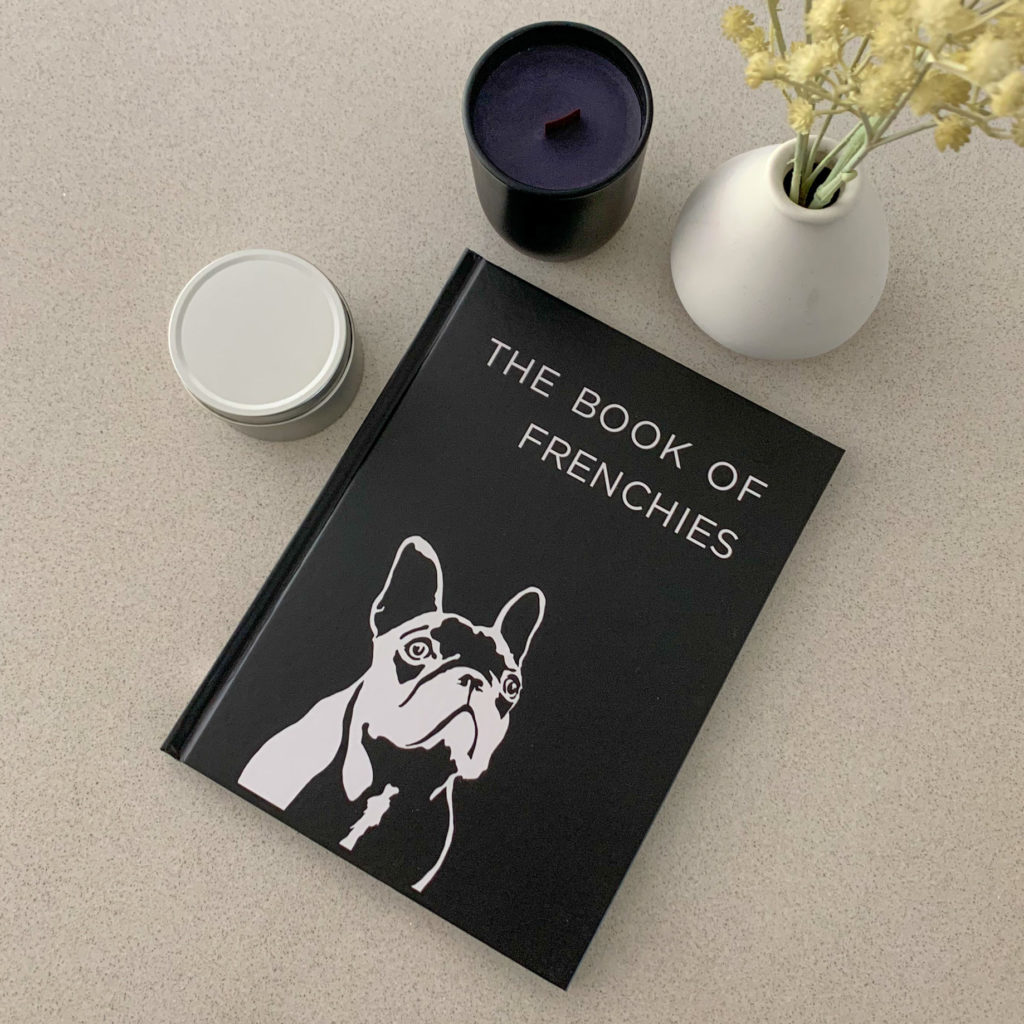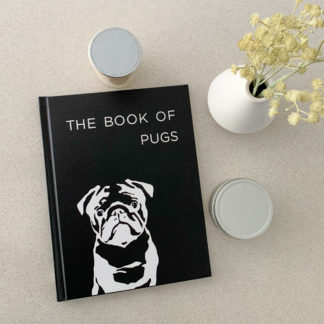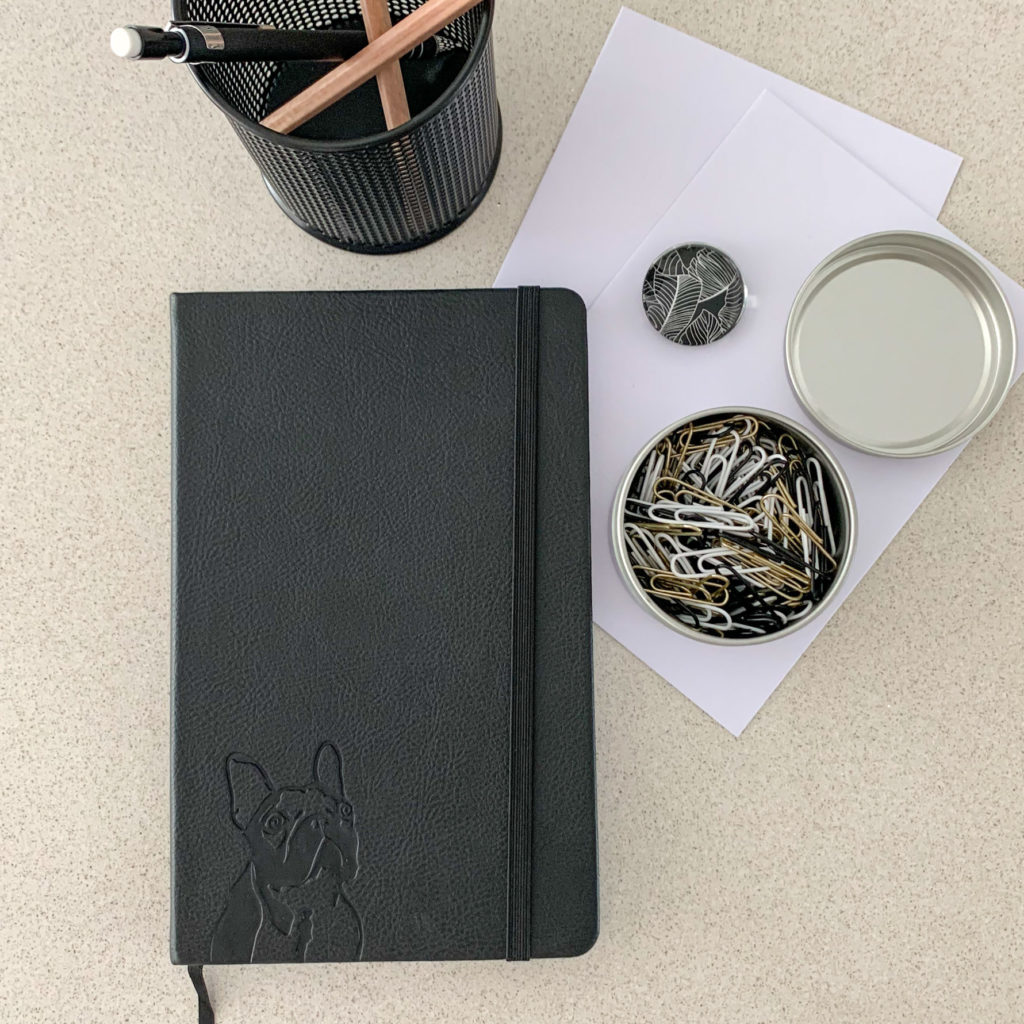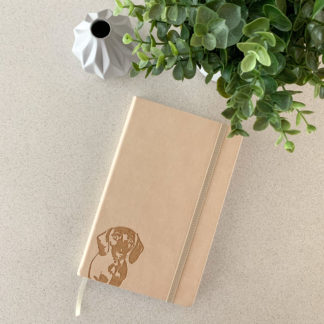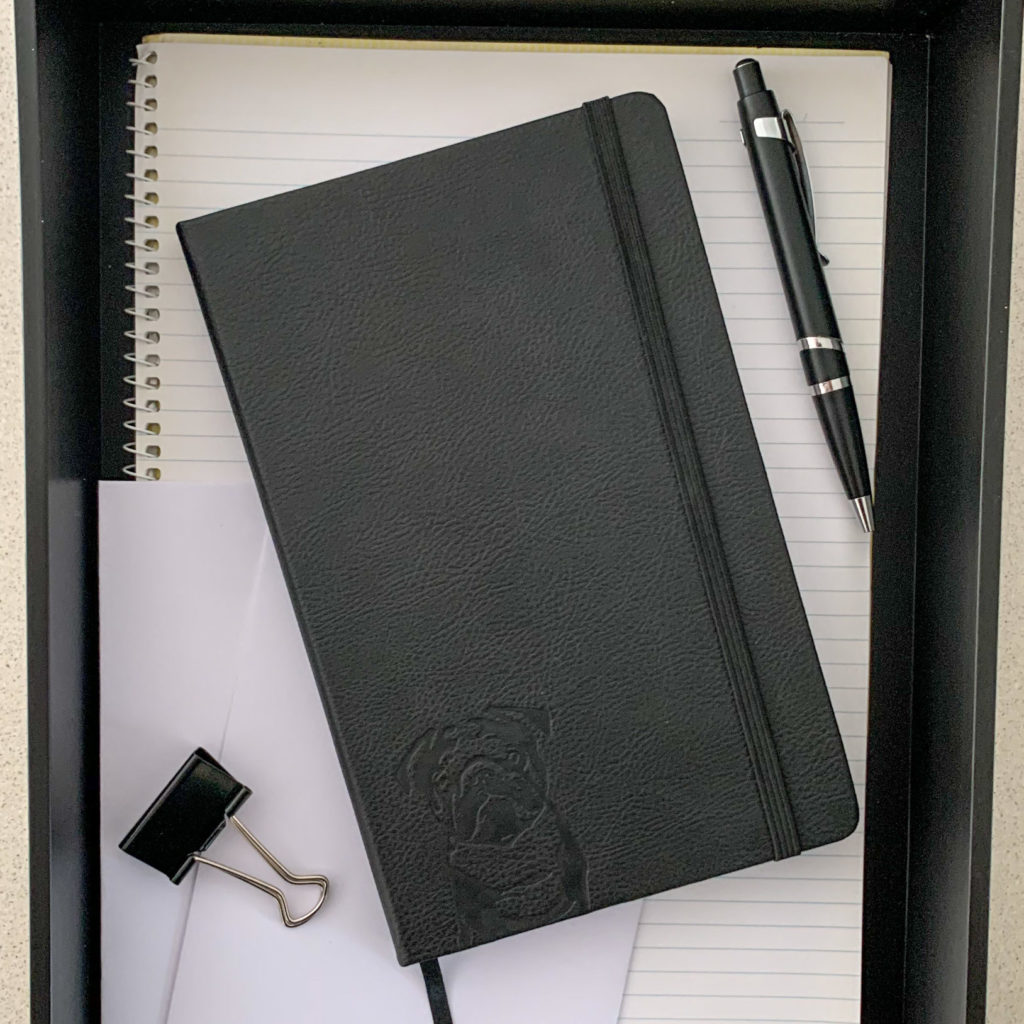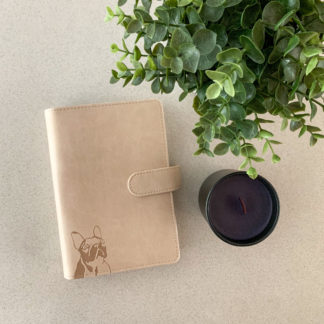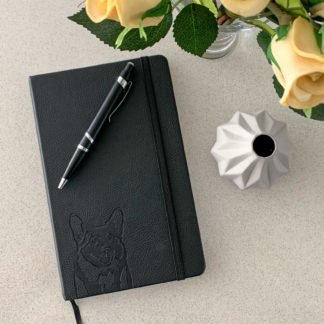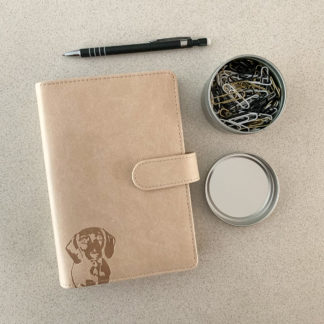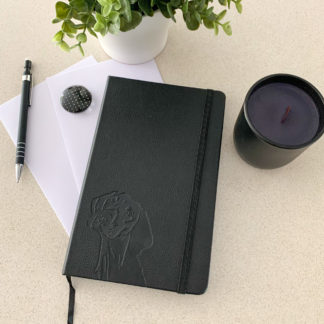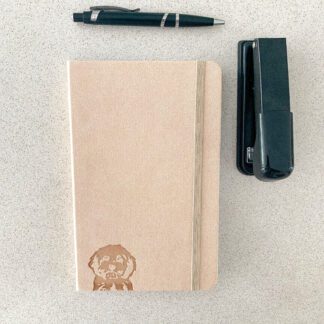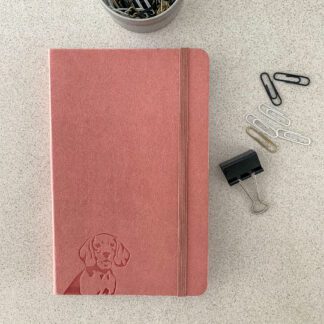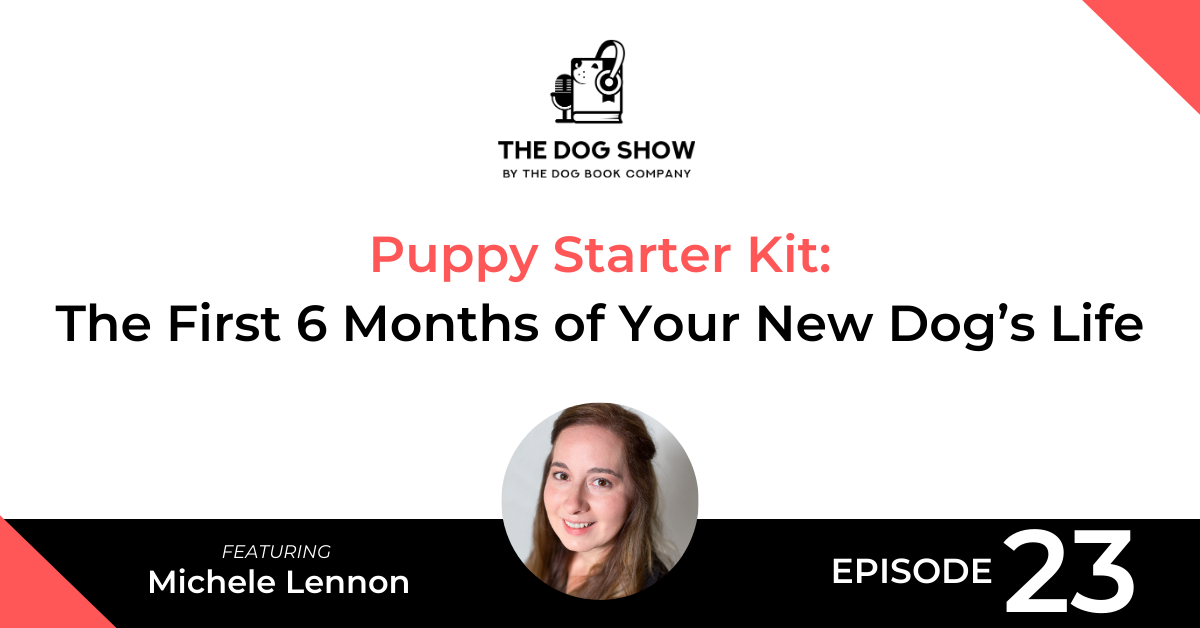
Looking for some help training your new puppy? You’re in the right place.
This episode of The Dog Show features Michele Lennon. Michele is the founder of the online community, How to Train a Dream Dog, and the 30 Days to Puppy Perfection Training Program.
Her one-of-a-kind training methods will help you build a rock-solid relationship with your puppy that will last forever.
In the interview, we talk about the top things new puppy owners need to be aware of, common mistakes new owners make, and how to handle the first six months of your new dog’s life. You can get Michele’s free Puppy Starter Kit here.
Find out more about Michele here:
Listen
Watch
Read
Will: This episode of the Dog Show features Michele Lennon. Michele is the founder of the online community, How to Train a Dream Dog, and the 30 Days to Puppy Perfection Training Program. The one of a kind training methods will help you build a rock-solid relationship with your puppy that will last forever. In the interview, we talk about the top things new puppy owners need to be aware of, some common mistakes that new owners make, and how to handle the first six months of your new dog’s life. You can get Michele’s free puppy starter kit from the show notes. Michele, welcome to the Dog Show today. Thank you very much for coming on.
Michele: Thank you so much for having me, Will. I’m super excited to be here.
Will: Yeah, it’s great to have you on. I know we’re on different sides of the planet at the moment, but the internet’s an amazing thing. So we get to chat about dogs together, which is nice.
Michele: Yes. I feel like it’s one of those topics that you can talk about anywhere. If you have a dog, next thing you know, you’re spending hours talking about your puppy and how they’ve grown, and what tricks you’ve taught ’em and all sorts of fun things.
Will: Yeah, absolutely. I love talking about dogs with anyone and anyone that will listen to me. So I’m sure we’ll get along really well. Speaking of dogs, I’d like to hear more about your dogs. So you have three dogs at the moment, Harper, Pickles, and Wesley. Do you wanna tell me about them?
Michele: Yes, definitely. Harper, Pickles, and… Pickles Meat Pork Chop is actually… That’s his full name.
Will: Okay.
Michele: So Harper is our Great Dane. She is seven years old. Pickles Meat Pork Chop is a King Cavalier. King Charles Cavalier. And Wesley is our Standard Poodle. So Pickles is two and Wesley is about a year and a half. Somewhere in there. And they get along beautifully. Harper is like the mama dog. She’s the oldest, and she takes care of everybody and puts everybody in their place. And anytime we’ve had board in trained dogs over, she’s definitely the mama. She takes care of everybody and trains everybody. It’s, kinda, like if there’s puppies playing, and they’re getting a little too rough, she’s the puppy police.
Will: Okay.
Michele: And then, the other two are just goofballs. They’re just banana crazy goofballs.
Will: So when and, like, what was the journey of you getting these three different dogs? Did you get them from, you know, rescues? Did you get them from a breeder or, kind of… What was that like?
Michele: Yeah. So, actually, all three of them came from a breeder. I had previously had rescue dogs. Honestly, I’ve had about 25 over the course of my career as a trainer. Some of them have been, you know, just dogs the owners surrendered for health reasons, others just came through because they couldn’t get placed in homes. They were a little too rough around the edges. And then, we had just been looking at… I’m, kind of, a big dog person. I love big dogs. So, we looked at the Great Dane, and, you know, I loved the temperament of those dogs. So, Harper came into our life. And then Pickles came through because I had been working with another client on a commercial shoot, and they had a Cavalier. You know, the breed is a great breed. It’s one of those breeds that, you know, great family companion dogs, easy going, easier to train. And this one little guy, oh my goodness, he was the best. And he did so well during the shoot, I was like, “Oh, I think I would love to have a Cavalier.” So that’s how he came into the picture. And then Wesley, he was… You know how sometimes parents go, “Well, we had an oops baby.” Wesley, I feel like was… If we had to say, he was the “Oops baby.” We never intended to get another…a third dog. You know, two is a lot, right? But I had seen a temperament test through a veterinarian that does behavior… You know, she just does all sorts of behavior testing and things like that. She’s also a trainer. And this little guy rocked it on his temperament test. He was the best of the 11 puppies. And I had really been working towards trying to get one of my dogs into a therapy dog. And Harper definitely, she got a little nervous side to her. So sometimes she has some whoosh that I think would scare some senior citizens if I brought her into a nursing home. And Pickles is just, again, just so wild. He’s just all over the place at any given moment. He’s great at training. He loves to play the training games. But I was like, “Oh, maybe Standard Poodle.” And he did really well. He seemed bombproof on his temperament test. And so we made the trek out to Ohio, which was probably about a five-hour drive for us. And we were just looking, you know. We were just looking.
Will: That’s always the way, but then you come home with a dog.
Michele: Yeah, yeah. Of course, we happened to bring the crate just in case. And we brought, you know, food just in case. And sure enough, he was just right. So, we brought him home.
Will: I think and as soon as you get in the car with a crate, we’re coming home with the dog, I think.
Michele: Yeah, yeah. My significant other, Nate, he was totally… Yeah, he was like, “Are you sure we’re… We’re bringing home a dog, right?” I mean…
Will: Yeah.
Michele: …you can’t go out like that and not to bring one home. But the thing, he’s very understanding.
Will: Yeah. Well, I like the little clan you’ve got there because you’ve got, kind of, a mixture of sizes and breeds. And I’m sure that all the personalities are different as well. How did they get along, I guess? Because Harper probably would have ruled the roost, I guess, in the house. How did they get along, you know, when they were first getting used to each other?
Michele: Honestly, same thing, it was really well. I mean, they’re such nicely tempered dogs. We didn’t have any issues. Everybody just blended in so easy right from the start. You know, I always have this trainer mind. When any new puppy comes in the home, we’re, kind of, already starting the training games right on day one. So everybody knew, you know, at least who was here. So when Wesley came, Pickles and Harper already knew what the routine was. They already knew we were gonna be working on impulse control and we were gonna be working on leave it. So we were gonna be, you know, doing all those things. So, yeah, they’re just… It helps that they were really nicely tempered dogs, to begin with, and it does help that I obviously know how to train those dogs.
Will: You’re a trainer. Yeah.
Michele: Right. And we have a great space for them. You know, we have a beautiful big yard that they can run around and play in and get their exercise and things like that. So, yeah, I feel like it was a pretty easy transition for all of them. The one that wasn’t, was probably my first dog, way back, that, kinda, started it all. So, I can talk about him if you want. He was really naughty.
Will: You’re talking about… Is that Bear?
Michele: Yeah.
Will: The chocolate Labrador? Yeah.
Michele: Oh my goodness. Yeah, he was the naughtiest dog ever. Honestly, he was the one that got me into becoming a dog trainer. When he was a puppy, he ate the curtains off the walls, he went through two couches. He was in his crate and moved to the crate somehow to the center of the room, kicked the tray out, ate a big hole in the middle of the carpet, in the middle of the room. And then, the thing that, kinda, just… Oh, man. He was in the garage. We thought we could, you know, trust him a little bit. He found his way to the garage, he knocked three gallon-sized paint cans off the wall, and one of them actually happened to be red. Red paint.
Will: Oh my.
Michele: So when we came home, we were like, “Oh my goodness. What happened?” We thought somebody had been murdered. That’s how bad it was. And then out came Bear, all happy as a clam, pouncing around with red paint all over him. Oh my goodness. It was crazy. So we thought, “Okay, we gotta do something about this dog.” And again, this is before I knew how to train dogs. We enrolled in a class, and I was just amazed at all the things that I could do to get this dog to behave. Who knew, right? Who knew you could actually get the dog to follow the commands and have some control over their excitement and not pull you down the street. And once I realized, you know, kind of, like how the dog’s brain works, I felt like it was a light bulb for me too because I fell in love with the behavior science behind it. I was like, “Wow, this is amazing.” And at the time, the trainer that we had used, actually used old school compulsion methods, which I don’t use. You know, I use… I’m a positive reinforcement, you know, trainer. I wanna reward my dogs for good. I wanna teach them. If they’re doing something wrong, I wanna teach them to do the right thing. And so, even though the methods that I learned way back then were ideal, I didn’t really love them. I just loved the science behind it. And I said, “Okay, well, I wanna get into this. I wanna learn more about this.” It’s just one of those things that once you get a little taste of it, you just get hungry for more. And that’s what propelled me into becoming a dog trainer. So, yeah, I mean, I studied under some amazing mentors, and I got my diploma, and I opened up my first business. And it’s amazing how far over the 20 years, like, things have changed. You know, in the beginning, I was probably, I think, trying to use what I had learned in that group class, that time that I was training there. And then through seminars and through, you know, just continued education, which I absolutely love to learn. I probably would have been, you know, a college student forever. That would have been my career. I just love to learn new things. And so, yeah, just being able to go to all these different seminars and learn all these different techniques and be able to teach them to my own students has been really amazing. So, I feel like it’s amazing. I can’t even describe it any other way.
Will: It’s a great journey to share with everyone because… I mean, you, kind of, going through those challenges yourself as well, which is what’s taking you down the path of wanting to become a trainer. And I’m sure a lot of people can resonate with that.
Michele: Yeah, I do use Bear as my story often when I’m talking to people who are struggling. You know, most new puppy owners, I think they get a little shell shocked, a little surprised when they bring a new puppy home. And it’s not all sunshine and rainbows. Might be for the first day or two. And then all of a sudden, they get what I like to call the puppy blues. They’re a little overwhelmed and a little frustrated and they’re not quite sure what they should be doing. And I use the time that I got to spend with Bear, you know, raising him. And I talk about that, kind of, woven throughout all of what I teach just because I was in their shoes. I didn’t know. I was overwhelmed. My dog was super naughty. I used to label him stubborn. Now, I teach my students we don’t use the word stubborn because it’s all about the training. You know, if your puppy doesn’t know how to do something, it’s probably because you didn’t teach him how to do it. And we talk about that a lot in the courses that I offer.
Will: And I think it’s so important the formative years, as a puppy, in terms of training them in the right way. Because as you said… And I know with our dog, there’s things that we didn’t teach her to do properly when she was younger, and now we’re, kind of, dealing with that as she gets older. So it’s much harder I think, once they get older, to break those habits, than teaching them at the right time, right?
Michele: Yeah. You know, I always tell people, “Look at your puppy and imagine them as an adult dog. What do you want them to do and what don’t you want them to do? Because where they are right now, that’s what we need to focus on and work through.” You know, you have to train the dog that’s in front of you, not the dog you want. So, you have to think about those things, though. “What do I want? Okay, let’s focus on my little puppy right now that doesn’t understand words, you know, doesn’t understand commands right now.” When you first bring them home, those are all things that need to be taught to them.
And so, just having like a plan of, you know, “Okay, I don’t really want my dog to jump on people, and I don’t really want my dog to chew up all the furniture or, you know, if I leave the house, I don’t want my dog chew on the electrical cords and get zapped.” Which, that happens. So teaching them now what to do so that those things don’t happen later is so important.
Will: What are the top things that, you know, a new puppy owner that hasn’t had a dog before, what should they be aware of when they’re bringing a new puppy home?
Michele: I would say time and the commitment it takes. It takes a lot of time and a lot of commitment to raise a puppy. And as a matter of fact, we actually…we pulled our group. We have a Facebook group. It’s got about 10,000 in it. And recently, we pulled them to find out, like, “What was the top thing that you were shocked about? You know, shocked with or shocked about when you brought home your puppy?” And that was it. Time and commitment. And the second poll answer, the top second whatever we answered there was, “They are just like a baby. Is literally just like a baby in a home.” And if people think that it’s, kinda, like bringing a gerbil home and you can leave ’em in the cage and then periodically bring them out and play with them and then put them away, puppies aren’t like that at all. They’re so social, they need to be near us, they need exercise, they need enrichment. You know, mental exercise and physical exercise are huge and they help curb a lot of those unwanted behaviors.
Will: I personally remember the potty training being the biggest challenge, like, initially. I wasn’t ready for that as a new puppy owner when I first got my dog. I think that was the biggest shock. All those things you mentioned in terms of like, them needing to train them and take them out and give them activity and attention, all that, kind of, stuff, I think I was prepared for because I’d had dogs in the past, but I wasn’t quite ready for how much discipline you needed to get them doing…like going to the toilet in the right area, basically.
Michele: Right, right. Yeah, I think that one. So potty training and biting, and then even the crate training, those are like the top three things that people or new puppy owners will say, “How do I stop the accidents in the house? Or “How do I stop all the biting? And why is my puppy screaming in the crate?” And, you know, in the United States here, we use the crate a lot. I know a lot of other places around the world don’t all use the crate. I love the crate. I think it’s a great place to keep your puppy when you can’t watch them, or downtime. You know, I call it nap-time and bedtime. That’s the best place for them to be. I always teach my students to use a puppy pen as well for playtime so that they can move around and stretch and usually doing some, sort of, canine enrichment in there. But yeah, potty training, that is a number one. I think that puppy owners struggle because they may think that it should go a lot faster than it does. And I always tell them their puppy’s brain and the bladder aren’t really fully connected for quite some time. You know, they’re growing and developing. And they’re growing and developing at a very rapid rate. So for a new puppy owner to expect their puppy to be potty trained within a week or so is very much setting the bar a little too high. You know, it could be a couple of weeks, it could be a couple of months. And helping them understand that and teaching them what to do to actually help the process go a lot faster, is what we do. We actually have a little lesson on that in our new puppy starter kit. It’s a whole potty train lesson.
Will: What are the most important skills and behaviors that a new puppy owner should be focusing on? Like, as soon as they get through the door, kind of, when they just brought the puppy home, what are those first, you know, couple of weeks looking like?
Michele: I mean, you already said potty training, right?
Will: Yeah, yeah.
Michele: That’s definitely next to that or at least start the process.
Will: Just because you don’t wanna be cleaning it up all the time as well.
Michele: Right, right. “Oh, another accident? Oh, another accident? Yeah, no, we gotta get the potty training down. Honestly, relationship-building so the puppy can trust their owner, and eventually so that their owner can trust their puppy. So, you know, we do quite a lot of, what I like to call, training games, to help build the relationship. And those games include things like working on impulse control. Teaching a puppy to think before they react. Leash skills. You know, as soon as you put a leash and collar on a brand new puppy, they tend to, like, extra scratch and pull and bite on the leash, then it makes picking them out to go potty really hard. So working on leash skills, working on getting them to just tune in. You know, the puppy gets so overwhelmed with all the stimuli outside, and then most puppy owners will go, “Oh, my puppy is so stubborn. All they wanna do is eat the grass. They don’t wanna pay attention to me. They just lay down and become a… What I like to call a pancake. And just pancake.” And I always try to say, “It’s like a brand new world out there for them. There’s so much stimuli. So many things. Birds and squirrels and cars and sounds and smells they’ve never experienced before. And it all is very overwhelming for them.” And for most puppies, when they get that overwhelmed, they can’t focus on any verbal cues that they may not know yet because you haven’t taught them. They might not even be able to focus on their owner, on their human because they’re just so overwhelmed. And then when you bring them back inside and you start, you know, working on things with them, they can become more focused.”
You know, we talk about this training dial. It’s this imaginary dial, but it goes from 0 to 100. And if we crank the training dial-up too quickly, our puppies, they’re not gonna be able to handle and grasp everything. And so, through the training process, you know, whatever games we’re teaching, whether it’s our basic obedience, like sit down, stay and come, or leave it, it’s like, you know, more like the impulse control or our meet and greets, that stuff has to be done slowly and gradually. So I think that as far as what new skills to teach a puppy owner, I mean, we outlined it. We, kinda, came up with this, “Alright, these are the things you should be working on first.” And most of them focused on getting the puppy to focus on their human name game. We play a couple of bump it games to get our puppies used to putting a collar and a leash on. We work on, of course, potty training. We work on bell training, too. Teaching our puppies to signal when they need to go potty outside. And so, there’s a little lesson inside that new puppy starter kit I mentioned a moment ago, that will actually teach people how to do that. So there’s a little lesson on there. I think one thing that might be a new concept for new puppy owners is what we like to call the mechanics of training. The training mechanics. So, they think, you know, they’re gonna just ask the puppy to sit and then they’ll give ’em a treat for sitting. And what we try to say is, “Well, your body posture, and your timing and where you place the treat and when you deliver the treat, all these little things play like this big part in the training process.” And we can actually, accidentally teach our puppy the wrong thing by mismarking or a mistiming or a missed and brought, delivering in the wrong place. So, there’s a lot of little things that we wanna make sure that our new puppy owners get right, right out of the gate, so that they don’t accidentally teach the wrong things.
Will: It sounds like really, you’re training the owner more than you’re training the puppy.
Michele: Absolutely. I always joke that if I put on my website that I’m a human trainer, nobody would contact me, but when I put dog trainer, everybody’s like, “Oh, she’s all right. She can help me train my dog.”
Will: So when you’re doing most of this, like…whether it’s the bell training or the impulse training and that, kind of, stuff, are you using food? Are you using treats to encourage the puppies to do things?
Michele: Yeah, we definitely use food reinforcements. That’s obviously, most of the time, the best option. But we also focus on, you know, petting as a form of a reward. Access to something a puppy wants could also be used as a form of a reward. So, you know, a puppy wants to go say hi to somebody. So teaching them, you know, to have some control over their excitement, maybe a sit, will then get them, either the person to come over or potentially the puppy to get to go over to that other person and say hi, as long as there’s no excessive pulling going on. So, yeah, we use a couple of different things. But the most common one is definitely food. To me, there’s some different values of food as well. It’s, kinda, like, dollar bills. You know, our low-level food is, kind of, like kibble or something like that. Like dried, biscuity type food, maybe that’s $1. Low value, right?
Will: Yeah.
Michele: It’s not really high in the money. Zuke’s Training Treats tend to be like a medium value or something with a little bit more moisture content. So maybe that’s like $5. And then our food rolls and boiled chicken, those tend to be, you know, the creme de la creme. The super, super high value. So maybe those are like $100 bills. And if the task is super duper tough, say, like, we’re working on recall outside, high-level distractions, we’re definitely gonna break out with the $100 bill food. And then if it’s a easy, simple task we’re working on inside, with low-level distractions, we might go back to working on kibble. So it depends, you know. I mean, a good example, we had a student the other day who was working on teaching their puppy to come around to their side. We call it Getting into Go Zone. And the way she was doing it, the puppy was just jumping up all over, super excited, they couldn’t focus. And I asked her what she was using, and it was a really high-value treat. And she was like, “I don’t know what to do. Are my hands… I’m not sure if I’m doing the right thing.” And I said, “Well, first we have to lower the value. Decrease the value of the treat. This is gonna, like, decreasing your puppy’s excitement level, keeping your hand a little bit lower, and going a little bit slower.” And she reported back on Friday, actually, that she was so shocked at how fast it changed her puppy’s behavior. Just adjusting things a little bit. And to me, that’s the training mechanics we talk about. Like, sometimes you just have to dial that in and figure out what motivates puppy, and make sure we’re giving it at the right time and make sure we’re delivering in the right location. Those, kinds of, things. They’re huge. They play big parts in communicating to your puppy, which, as you know, that it’s one of those things that… Both puppy and humans speak a different language. So having them get on the same page and both speak some common ground, is so important. And trying to get it done fast is… You know what I mean? Like, teaching something to a puppy sooner rather than later is important. Otherwise, you can go a couple of weeks, a couple of months, and miss such an important training opportunity.
Will: It sounds like it’s a real gradual process that, you know, you’ve gotta be very patient with. But also, like, what I’m hearing with the currency of the treats and also like focusing on the behaviors in a safe environment, like inside, or using the crate, those kinds of… Before you try and do stuff outside, these things are like…it’s like, you’re almost slowly progressing them up to a level where you want them to be, right?
Michele: Yeah. I think that, you know, people wanna rush through. They just wanna rush through, “I wanna get my puppy coming when called off-leash.” That’s like the big one, right? Everybody wants to get their dog off-leash and coming when called in high-level distractions. And honestly, there is so much foundation work that needs to be done and the relationship needs to be built. And you know what? It sounds funny when I say, “You need to build a relationship with your puppy.” But it’s the truth. Your puppy has to learn to focus more on you than those other distractions, otherwise, when you start to practice that stuff… You know, we start obviously inside with recall games or come command, and then we slowly add distractions inside before we would ever take it outside. And we typically take it to pavement before we even take it to grass. And so there is this slow progression of working on skills and commands and things like that. And we definitely don’t go from inside, straight outside without any foundation skills or without having started to work on the relationship building.
Will: Yeah. I’m not sure if it’s the same in the United States. But the vet recommendations of getting a new puppy in Australia is like… I think you get them just prior to their final vaccination, and therefore, you’ve got a couple of weeks that they need to stay actually within a refined area and, kind of, like in the house or something like that before they should be, kind of, going to the park, for example, and getting exposed to other dogs. So that’s a good opportunity to work on a lot of those early-stage things, I think. When they’re more, kind of, restrained to the areas that they’re in.
Michele: Yeah, definitely. Here in the States in, kind of, the law, we’re not supposed to bring puppies home under eight weeks.
Will: Yeah, that’s the same here. Yeah.
Michele: Okay, perfect.
Will: Yeah, yeah, yeah.
Michele: And so most of the time, the breeder will give the first round of vaccines and then, it’s, kind of, on the new puppy owner to give the second and third round because, you know, they need three. So, yeah, there is this, kind of, crucial time between like that eight to 12-week mark, where, you know, we wanna make sure that we are working on these skills. And socialization, it’s a big word in puppy training. And most puppy owners think that socialization means that “I gotta expose my dog to as many dogs as possible in the short window of time.? And I like to think of socialization as more, “We are exposing our dog to sights, sounds, and smells in a positive way, especially those things that we’re going to expose them to later in life.” I mean, as like an adult dog. So making sure they have some, sort of, comfort level and a positive association with those things when they are younger, obviously is better. They’re little sponges when they’re that young. So, we have to do things slow. We can’t take ’em on, you know, five field trips every day, to all these different places. They’re gonna be overwhelmed, and overstimulated, and potentially, have a really scary experience.
Will: And they’re probably going to expect that for the rest of their life as well.
Michele: “Where are we going? Where are we going?”
Will: So I guess, what are some of the big mistakes new puppy owners make? It sounds like they’re doing things too quickly or maybe tryna’ jump in and expecting results too fast.
Michele: Yeah. I would say the most common one is bringing a new puppy home and starting to ask it for commands, you know, especially sit down, stay, come, leave it. Leave it is like the big one. And “No bite. No bite.” They always say, “No bite.” And your puppy is brand new like a baby. I think the most frustrating thing is they can visually see their puppy running and jumping and playing, but mentally, they’re a baby. They literally don’t know what you… Unless you teach them, they don’t know what you want them to do. I always joke and say, it’s like the Charlie Brown teacher on Charlie and Snoopy. You know, Charlie Brown, “Wah, wah, wah. Wah-wah, wah-wah, wah.” That’s what the Charlie Brown teacher does. And that’s what your puppy hears, until you spend some time and physically teach them what is sit is and what a down is, and how to turn your head away from something when somebody says, “Leave it.” Like, those things actually have to be talked to our puppy.
We sometimes… Well, not sometimes. We hear puppy owners say, “Quiet,” to a puppy that’s barking. Well, if we keep saying quiet at the same time the puppy is barking, we’re gonna actually start to teach our puppy quiet means, “Keep barking. Way to go. I love it when you do that.” Because they’re not actually understanding that quiet means zip your lips. They’re not understanding that they need to stop the actual activity that they’re doing. So, there’s an actual, you know, technique that we go through and work on to help our puppies understand what these words mean so that… We have to teach the behavior first, reinforce the right behavior, and then we call it something. And in there, we add enhancing those in and add different levels of distractions and all that fun stuff.
Will: Again, that’s coming back to the human behavior. And it’s, kind of, second nature to say quiet or to say shoosh or whatever you’re used to saying when something is loud and you want it to be quiet. And just because your puppy doesn’t understand that the owner is just reacting to the situation
Michele: Yeah. Yeah, that would be like the, I think, the number one thing. “How do I get the dog to stop barking? And I keep saying ‘Quiet,’ it is not working. What do I do?”‘ And we’re like, “Oh, well…” There’s no just one thing. There’s a lot of little things, which, I think that would probably lead to the next thing. What do puppy owners do wrong? That would be, expect too much too soon and, not realize that training is like fitting puzzle pieces together. And every little thing that you’re doing is working to, kind of, put together this skill set that your puppy is eventually gonna have. And so when they come to us, and they wanna know how to fix this one problem that they’re having, there’s never just one problem. And there’s a lot of different things that have to happen to fit together to fix that problem. You know, when we talk about, let’s just say jumping, for example. You know, we probably have to work on sit to start. We have to work on teaching the puppy that when they see somebody, that it becomes an automatic thing to just sit. We have to work on understanding the different levels of excitement that, you know, people and sounds and smells and things that the puppy sees and wants to react to, and, like we said before, working on that training dial. Those leash skills, right? So obviously they have to know how to be well behaved on the leash. We do a lot of what we call pre-training. We call it the dress rehearsal and the show, right? So, the dress rehearsal is all the practice that we’re gonna do ahead of time before we actually get to the show. Like, the person coming in the door or us getting to go walking down the street when cars are going by. So working on the dress rehearsal, a lot of dress rehearsals have to happen, otherwise, your show is a flop. You’re not gonna be able to get your puppy to perform, you know, when you need them to. So there’s a lot of little things we do to get to that point of the show.
Will: Okay. So tell me about the 30 Days to Puppy Perfection Program. It sounds like, to me, it’s the roadmap for a new puppy owner to do all these things we’re talking about. Set and lay the foundations for the type of dog that they wanna have in their life. Is that right?
Michele: Will, you just nailed it. That is exactly what 30 Days to Puppy Perfection is. Honestly, we really do start with the beginner skills or the beginner foundation games. Like I said, name game and impulse control games, and teaching puppy how to respond nicely on a leash, and get into the right position so that when we walk to the door to go outside, they know where to go. And then as they progress through the program, the program is literally the blueprint of what you should be doing with your puppy from the minute you bring them home, through… You know, it’s called 30 Days to Puppy Perfection because it’s delivered over the course of a month. So each week you get a new module, and in each module, are all the lessons that you should be working on. But to be honest with you, we have students in the program that have been with us over a year because they love to go back and revisit the lessons. You know, most puppies get to maybe about the six-month mark, and puppy owners, kinda, start to get a little lax in the training, you know. They see it what looks like an adult dog and they’ve already been working on things before and they, kinda, settle into, “All right, that’s just the way it’s gonna be.” But our puppy has a lot more energy at six months and has still a lot more learning to do. So making sure that you can go back and revisit those lessons, is a big part of the training. So, the program, you know, it’s, kind of, like a lifetime access. You can stay in there as long as you want. The choice you have to make is “Do you wanna do it yourself? You wanna just go it alone and do it yourself, or would you like extra support?” And that’s where, like, the pro-level comes in. So we have a DIY level and a pro-level. In the pro level, get your access to us, the trainers, when you need help.
Will: And just remember now, it’s an online program that anyone can access from anywhere, right?
Michele: Yes, absolutely. You can access it from your phone, your tablet. You can access it while you’re going down the road on vacation somewhere, if we ever get to that point, I guess, travel. Yeah, you can access it anywhere. And it comes with worksheets and charts and checklists. There’s probably 50-plus videos in it to just really guide you and help you. You’re gonna physically see us working with dogs and teaching them exactly how to start the command or the skill, and then progress them through the course while we’re working on other distraction levels outside, you know, and adding all, sorts of, fun to it. Things then that they might not have known what to do or how to do it.
Will: Okay. So I’m guessing the optimal time to start in the program is at the eighth-week mark, like we discussed, or is it still gonna be pretty beneficial like you mentioned even… Let’s say I’ve got a six-month-old puppy, and I may have been a bit slack with my training. Is it still gonna be helpful to jump in at that point?
Michele: I would say yes. The six-month-old puppy could still totally do the program. We have a couple of dogs that are one and two years old in the program, and they’re still doing great. We actually have a lot of students purchase the program before they even get their puppy because there’s so much preparation that needs to be done before a puppy comes home, whether you’re puppy-proofing your home or whether you just wanna get your mind wrapped around dog training and how to actually teach your puppy the minute they come home and what they should be doing or what you shouldn’t be doing. That’s another thing. You know, just knowing what you should not be doing, I think is an important part of the puzzle.
Will: Yeah. Well, we touched on this earlier in the chat. Like, it’ll avoid that, kind of, shock factor when you first get your puppy home and you don’t know what you’re doing. You’re scrambling, kind of, thing. If you do some training or get the information you need before bringing them home, you’re gonna be much more well prepared and ready to, kind of, do all the things you need to do in those first couple of months.
Michele: Yeah. I always say, be proactive, not reactive. So, when you’re proactive, you’re planning ahead or you’re preparing. When the puppy comes home, you’re hitting the ground running at that point. And I’m making it sound like there’s a lot to it because there is. You know, that potty training, and crate training, and what happens when the puppy is crying? And what happens if I pet my puppy while they’re jumping and what am I reinforcing that I don’t want later? Like, all these little things play such a big part in it. And we wanna make sure puppy owners are on the right track and they’re not doing the wrong things, or reassurance when they are doing the right things. That’s important too.
Will: Okay. So where is the best place for people to start if they wanna find out more about you? If it was me, I would suggest they check out some of your YouTube videos first because you got some amazing content on YouTube. And then probably go to your website and get the puppy starter kit, which is totally free and it gives you a bit of an insight into, you know, your program we’ve discussed here, the 30 Days to Puppy Perfection. Does that sound like a good, kind of, path for people to take?
Michele: Absolutely, yeah. We do have a lot of content on our YouTube channel and the website. Pretty much, from the minute you land on there, you’re gonna be… You know, you go here for this, you go there for that. But the first place to really start is that new puppy starter kit. And like you said, it’s free. It’s just a great way for people to get in there and watch some content. Watch some videos. The potty training lesson is in there. The bell training lesson is in there. Simple puppy schedule, a checklist, a potty chart, supply list. Things you might need for new puppy owners, that’s all in there as well. And it’s all free. So it’s a really great place for people to start on the right path to puppy success.
Will: Definitely. It’s a no-brainer, I think, just to get in and get the puppy starter kit, because as you said, it’s better to be proactive than reactive. Or if you’ve already got a puppy and you’re looking for some great advice, it’s also a good place to get going.
Michele: Yeah, yeah. And there’s some other videos in there too about… You know, like the 10 mistakes to avoid as a new puppy owner, that’s helpful. That’ll get you pointed in the right direction, too.
Will: Perfect. Well, I’ll share the puppy starter kit in the show notes, as well as your website, and the YouTube channel, and at least social media channels as well because you’ve got Facebook and stuff, too. But, Michele, thank you so much for coming on the Dog Show today. It’s been a pleasure to talk to you. I’ve learned a huge amount about training puppies and, kinda, getting prepared for those first few months with a new dog, and I’m sure all the listeners have as well. So thank you for coming on.
Michele: Oh, well, thank you so much for having me. I’ve enjoyed this. And, you know, as we said at the beginning, any opportunity that we can talk about dogs, just makes our day.
Will: Absolutely.
Michele: If we get that opportunity.
Michele: Absolutely. So thanks a lot and have a great day ahead.
Michele: Thank you. You too.
From Our Store
-
French Bulldog Coffee Table Book – The Book of Frenchies
From: AUD $59.99 Add to cart -
Dachshund Coffee Table Book – The Book of Dachshunds
From: AUD $59.99 Add to cart -
Pug Coffee Table Book – The Book of Pugs
AUD $59.99 Add to cart -
French Bulldog Notebook – A5, Hardcover, PU Leather, 100gsm Lined Pages, Bookmark (Three Colours)
AUD $34.99 Select options -
Dachshund Notebook – A5, Hardcover, PU Leather, 100gsm Lined Pages, Bookmark (Three Colours)
AUD $34.99 Select options -
Pug Notebook – A5, Hardcover, Black PU Leather, 100gsm Lined Pages, Bookmark (Three Colours)
AUD $34.99 Select options -
French Bulldog Planner – PU Leather Exterior, Metal Loose Leaf Ring Binder, 100gsm Paper (Two Colours)
AUD $64.99 Select options -
Corgi Notebook – A5, Hardcover, Black PU Leather, 100gsm Lined Pages, Bookmark (Three Colours)
AUD $34.99 Select options -
Dachshund Planner – PU Leather Exterior, Metal Loose Leaf Ring Binder, 100gsm Paper (Two Colours)
AUD $64.99 Select options -
Vizsla/Weimaraner Notebook – A5, Hardcover, PU Leather, 100gsm Lined Pages, Bookmark (Three Colours)
AUD $34.99 Select options -
Cavoodle Notebook – A5, Hardcover, Black PU Leather, 100gsm Lined Pages, Bookmark (Three Colours)
AUD $34.99 Select options -
Beagle Notebook – A5, Hardcover, PU Leather, 100gsm Lined Pages, Bookmark (Three Colours)
AUD $34.99 Select options

